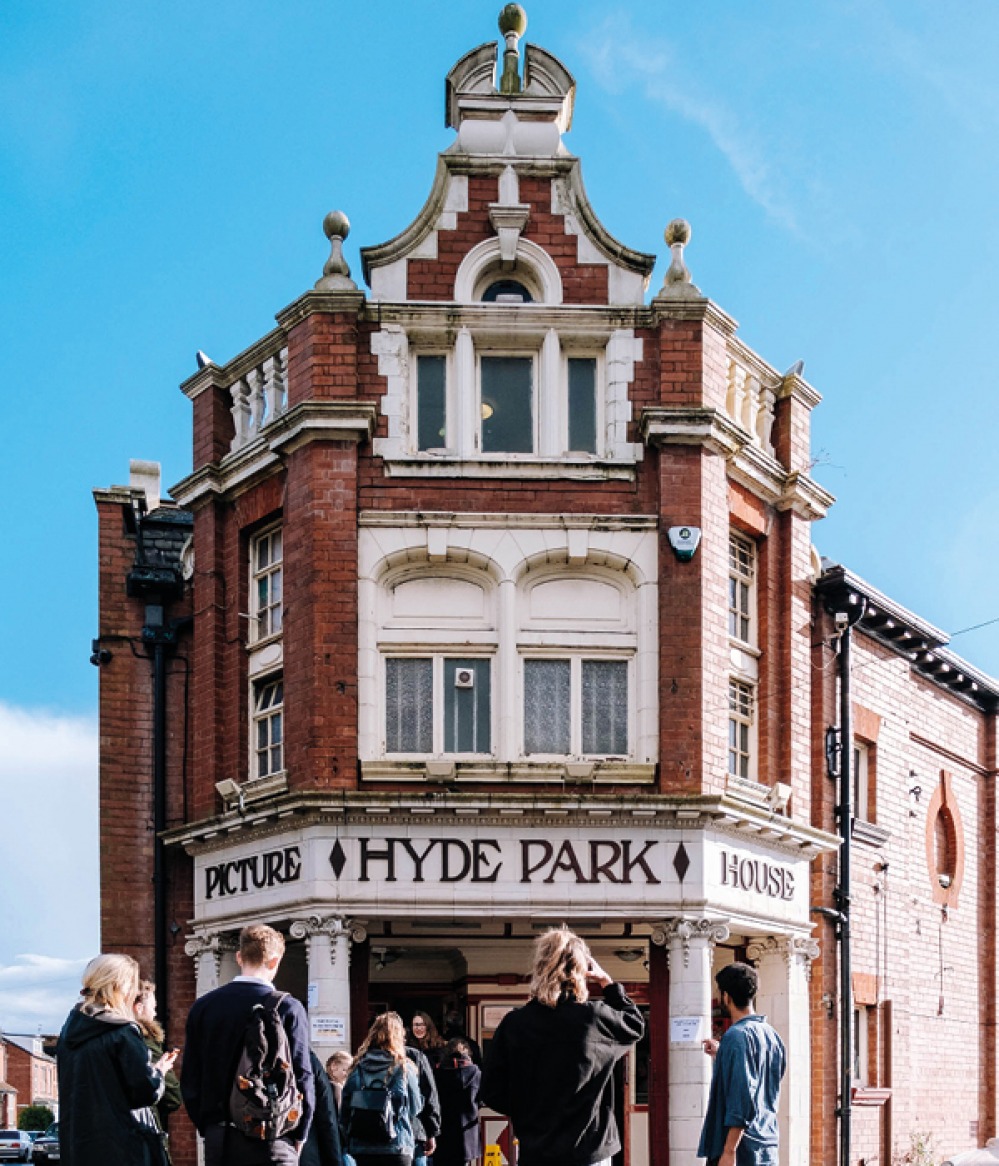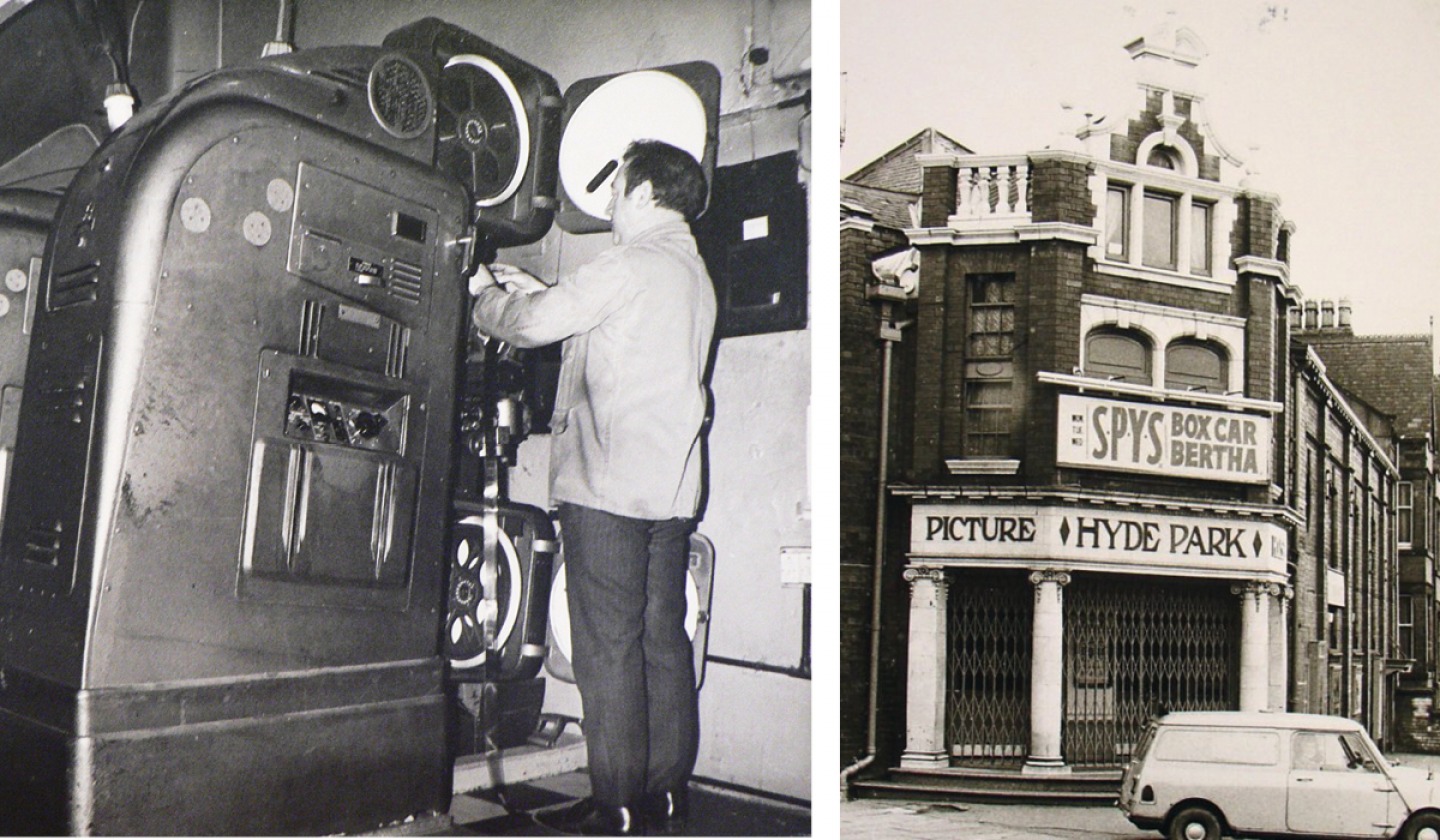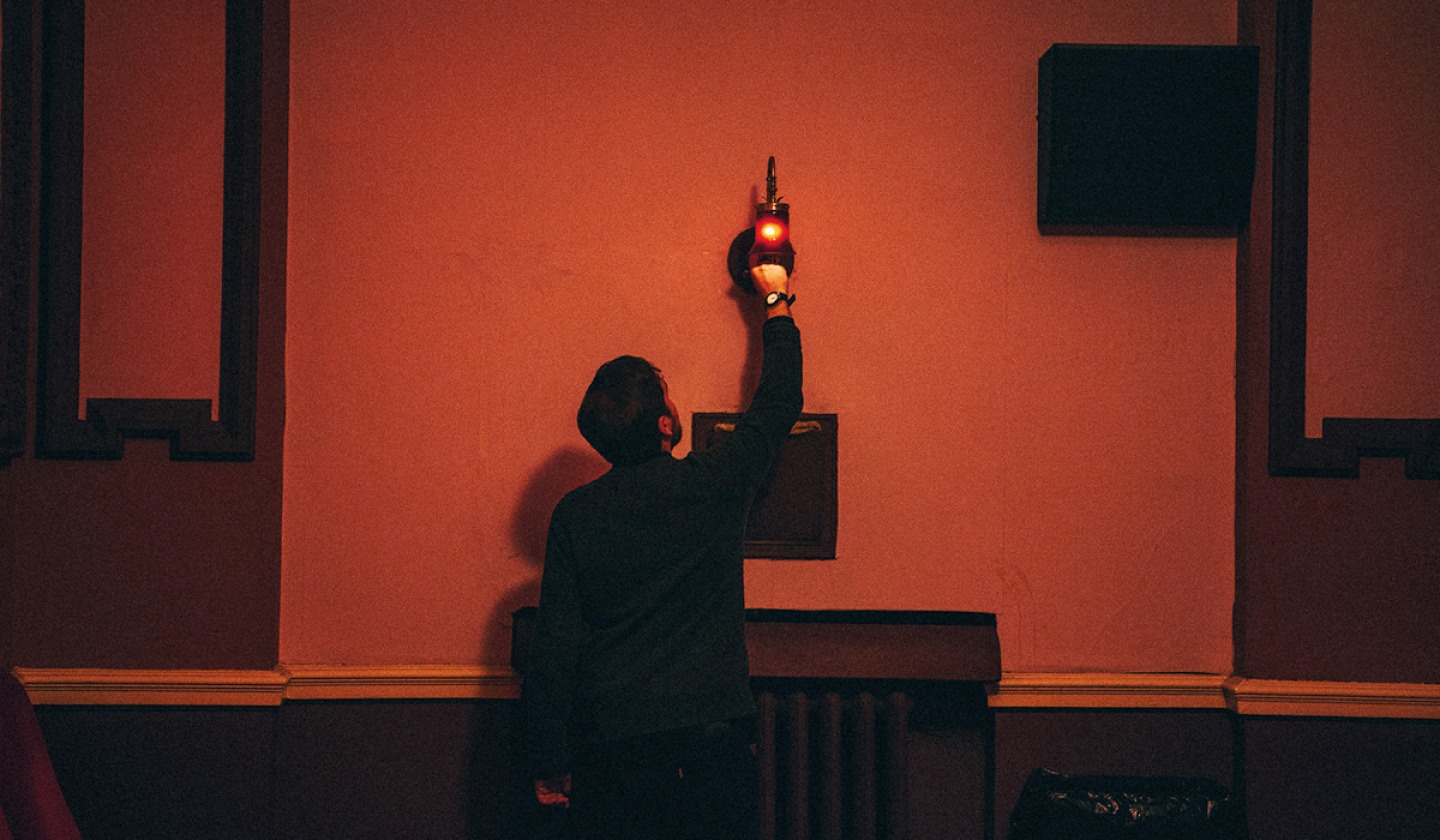What You Need to Know About the Iconic Hyde Park Picture House in Leeds that's Set to Reopen

As its extensive restoration project comes to an end, the historic Hyde Park Picture House will once again welcome guests as it strives to become the best place to experience film in Leeds
But the picture house’s continued survival relies on more than goodwill, and it’s for this reason that The Picture House Project was launched to give the historic building a second wind. Looking backwards as well as forwards, the project was about protecting and preserving the building’s historic features, while at the same time making it more sustainable, more comfortable and more accessible. Now having undergone extensive restoration and renovation, Hyde Park Picture House is set to reopen this June as a fresh, new venue for the community.
Leeds’ Hyde Park Picture House is now the only gas-lit cinema in the country, and possibly even the world. It opened just three months after the start of the First World War. ‘The architect, Thomas Winn, and proprietor, Henry Child, originally worked together between 1906 and 1907 to create a hotel before converting it into a cinema in 1914,’ explains Martha Boyd, Hyde Park Picture House’s digital marketing coordinator. ‘The pair previously worked together in 1894 on an unusual project to greet King George V on his visit to Leeds, when they sculpted an arch made of 1,500 loaves of bread! Thankfully, they used sturdier materials for our building.
Read More: Five Minutes with Pretty Picture Company's Founder and Director, Hannah Gray

‘Since then, we have welcomed all kinds of visitors, but perhaps the most unusual one was an elephant who paraded outside the cinema in 1959 to advertise a screening of The Big Hunt – a film set in the African jungle.’
The building’s 108-year-long history is full of on- and off-screen drama, including two world wars, threats of closure, celebrity guest appearances and more than a few changes to the way audiences can watch and enjoy films. But to ensure it continued to thrive for another century, the regeneration project to help protect and restore the existing building was essential.
‘It’s an honour, but also a great responsibility, to be based in such a historic building,’ says Martha. ‘So, one of the key reasons behind the project was to preserve and restore the incredible features of Hyde Park Picture House. It was becoming increasingly apparent that work was needed to protect the building from damp and rot as well as preserving its heritage features.
‘One reason for expanding the cinema was to improve its financial viability by hopefully bringing more people through the doors. We recently undertook an interactive heritage project called Hiding In Plain Sight which shows how many lost cinemas of Leeds there are. We’re determined to avoid another one – especially since Hyde Park Picture House is such an integral part of its community, so The Picture House Project was a vital step in the safeguarding of Hyde Park’s film home.’
The picture house commissioned a feasibility study to look at whether their dream of expanding into the basement to create a second screen could become a reality. After careful consultation, many rounds of applications, project tendering and planning, the cinema finally closed its doors in March 2020 ahead of redevelopment work beginning on site.
Read More: Meet Sheffield Actress Jessica Ransom of Doc Martin and Horrible Histories Fame
‘We knew there would likely be unexpected setbacks along the way but we weren’t expecting that as soon as work was about to begin, a pandemic would stop us in our tracks. All work was paused until April 2021, when restorations were able to resume thanks to new funding from the National Lottery Heritage Fund and the Cultural Recovery Fund,’ Martha recalls.
A long time coming, work on the picture house began with four main aims: to protect and preserve the historic cinema, make it a building which is open to everyone, create the best film-watching experience in Leeds, and have a picture house that works for its community.
‘A key aim was to preserve the historic features that we all cherish, but also to recognise the building’s shortcomings and transform it into a place that is accessible to all. Although we had a wheelchair entrance, we didn’t have a toilet that was accessible without using stairs, so the other main aim of the redevelopment was to make all areas of the building accessible.

Read More: Arts, Exhibitions and Theatre You Won't Want to Miss in May
‘Another aim was to make the cinema more comfortable for the audience. After all, we want to continue living up to our original advert in the Yorkshire Evening Post when we first opened, which declared us the “cosiest in Leeds”.’
The main changes to the building have been extending downwards into the basement to create a second screen, and to the side on Brudenell Road to make a café/bar area, a community room and a bigger box office space. ‘An ambition we had for a while was to create a new screen which would hopefully open the cinema for longer, to more people and, excitingly, expand our programming,’ says Martha. ‘This gives us an opportunity to increase the number of screenings that help our community, such as more Memory Matinees and Pay As You Can family-friendly Hyde & Seek screenings and activities.
‘The second screen was built as a box within a box to limit sound spilling between screens. To cater for a larger, more accessible box office area, the main auditorium’s back wall has been moved inwards slightly. The new foyer has been extended to make it easier for wheelchair users and an accessible toilet has been added in this area.
‘Because our building is so beloved and the site of so many memories for many, the thought of change can be scary, but great care has gone into preserving its iconic features. For example, some may have feared that our extension to the side of the building on Brudenell Road might have meant the oval brickwork features were being lost, but these have been carefully restored and can now be seen inside the building instead of externally.’

The other main goal The Picture House Project have worked on is carefully restoring historic features. ‘As well as popular features like our flickering gas lights being restored, audiences can look forward to spotting newly-recovered gems that they won’t have seen before.
‘Lifting the foyer carpet revealed layers of vinyl tiles stuck to the historic terrazzo – an original feature which has been hidden for so long but now is restored to its former glory. A big part of this restoration process involved getting all the glue off the terrazzo as well as recruiting specialist conservation experts to grind it down, polish it to reveal its vibrant colours and make any essential repairs.’
Some of the most iconic features of the Picture House are the distinct white balustrades on the building’s façade. Due to weathering over time, some of these needed to be replaced with meticulously constructed replicas, while others have been repaired. The team were also committed to ensuring new paintwork on the Edwardian walls was sensitive to the cinema’s history. In 2019 conservation specialists Crick-Smith undertook an architectural paint analysis of the building which revealed the many layers of colour changes over the years. Now, in the main auditorium they’ve largely used reds and creams, which were chosen because it could see they’d been used many times before earlier in the cinema’s life.
Read More: All About the North Yorkshire Moors Railway Ahead of their 50th Anniversary Celebrations

Read More: We Climbed Newcastle Cathedral's Lantern Tower: Here's What You Can Expect from the New Season Tours
Meanwhile, the ornate arches in the ceiling of the auditorium are looking all the more glorious after fresh gold paint which wasn’t chosen based on the historic paint survey but instead as a way to celebrate and bring more attention to this lovely detail in building which was hidden for many years due to being painted a much duller colour.
As with any big task like this, The Picture House Project has encountered problems and delays. ‘We had flooding in the basement and the challenging discovery that the façade parapet we are all so fond of was leaning dangerously outwards,’ explains Martha. ‘To carry out structural repairs, we had to take the parapet down brick by brick, replace the steel lintel and rebuild the parapet again, brick by brick.
‘Other delays along the way have been less problematic – more surprises and exciting discoveries of heritage features that we didn’t know existed, and therefore need lengthy consideration over how best to progress in order to both protect and showcase these features.’
One of these surprises was revealed behind the candy-striped proscenium arch many will be familiar with in the main auditorium. Behind it, the restoration team discovered an earlier arch from the 1930s with Art Deco details. And unexpected findings were not just limited to the building itself but also the objects inside. ‘We’ve found all kinds of treasures under the floorboards during the restoration process,’ says Martha. ‘Most commonly, we’ve found cigarette packets from the past that look a lot more glamorous than today’s and are a reminder of how smokey cinemas would have been. We’ve also found lots of confectionery packaging which has made us think Nestlé and Cadbury need to up their game with designs and learn from the past.

‘One of our favourite discoveries has been an Edwardian-era hat pin. It was found under the floorboards right at the back row of the balcony, which seems like the best choice of seat for hat-wearers. We found it fascinating looking into the history of similar hat pins which became a symbol of women’s safety as they could be used for self defence. In 1908, laws were even passed limiting the size of pins due to a fear of them being used as defensive weapons.
‘We’ve been sharing the treasures found on our social media and people have been loving our discoveries so we’re looking forward to sharing some of them in a display cabinet when we reopen.’
Aiming to reopen in April, the Hyde Park Picture House team can’t wait to welcome people back. ‘It will be a real time of celebration not just for us but for everyone we welcome through the over-a-century-old doors,’ says Martha. ‘Hopefully everyone will be as excited as we are for this new chapter of Hyde Park Picture House which brings with it so many new opportunities for connection with new people and new communities.
‘As well as a polished version of the cinema, visitors can expect lots of other exciting improvements when we reopen. There will be an expanded programme thanks to the additional screen. This means films can now be shown closer to release dates because in the past we were limited by only having one screen.’
‘As well as popular features like our flickering gas lights being restored, audiences can look forward to spotting newly-recovered gems that they won’t have seen before’
They have also put a lot of thought into their food and drink offering. ‘We will be working with local suppliers such as Kirkstall Brewery, North Star and Northern Bloc. As well as exciting snacks, people can expect to be more comfortable in their visits to the Hyde Park Picture House thanks to new heating and ventilation systems, as well as comfy new seats in the same traditional style.
‘The community around us are a vital part of the story of the cinema’s restoration,’ continues Martha. ‘When they visit they can expect to see physical reminders of the role the people around us have played in allowing the cinema’s story to continue, with plaques on seats and underneath our gas lamps that were sponsored by individuals and local businesses.
‘Audiences can expect the Hyde Park Picture House to continue to be one of the most exciting places in the country to experience cinema. We are proud to have preserved our two 1960s Cinemeccanica projectors and our well-trained projection team enable us to continue to screen film from 35mm prints. We are keen to share more about the history and tradition of film, so people can enjoy an increased number of projection room tours too.’









